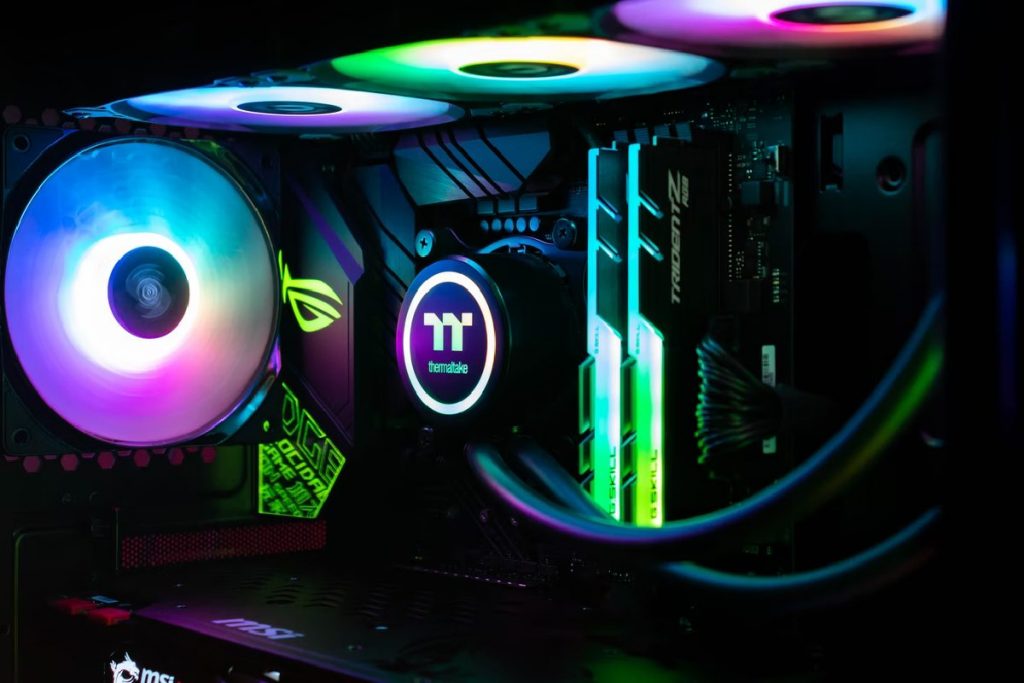What Do You Need to Build Your Mini-ITX Computer? – A solid mini-ITX computer will be able to do whatever you want of it, whether gaming on ultra settings, streaming multiple 1080p movies at once, or rendering videos.
The components of a mini-ITX PC are typically more expensive than that of their Micro ATX counterpart due to an absence in the economy of scale. However, if you can get past this initial price hurdle, the payoff is well worth it in terms of build quality and esthetics with your Mini-ITX case or other peripherals.
With all these parts ready, let’s get started building your Mini-ITX PC.
Table of Contents
What Do You Need?
1. Mini-ITX PC Case
A Mini-ITX case is the first thing you will need for your Mini-ITX build. In addition to space constraints, a Mini-ITX case is also more visually appealing than a full tower chassis while still offering the best features.
After settling on a case, you might want to check for compatibility with your upcoming build. It’ll allow you to add all your parts into one place, then show you if they fit together and how they stack up against each other in terms of price.
2. Mini-ITX Motherboard
The motherboard you choose will depend on the case and overall build you have in mind. It’s also one of the most pricy parts of a PC, so finding an affordable one is crucial if you want to keep costs down.
3. Mini ITX CPU Cooler
You want to make sure you don’t go overboard on size here, as some of the larger CPU coolers on the market might not fit within your case.
4. Mini ITX PSU
You’ll want about 300W for a decent gaming machine and 500+W for modern video editing machines. The power supply comes in many different wattages, so be careful when making this decision. You can find out how much power you need by checking what GPU you plan on using. Use Google to see if they recommend a certain wattage range.
5. Mini ITX RAM
Your motherboard will have a maximum amount of memory that it can support, so be sure to check what kind of RAM your motherboard accepts before buying any new sticks.
There are three main speeds when choosing RAM for your build: DDR3-800, DDR3-1333, and DDR3-1600. Here’s how they work in relation to each other: DDR3-800 is equivalent to 5GHz clock speed on the CPU DDR3-1333 is equivalent to 6GHz clock speed on the CPU DDR3-1600 is equal to 7GHz clock speed on the CPU
Ensure to check if your motherboard can support one of those speeds and the maximum it is capable of before purchasing new RAM.
NOTE: It’s very important that you don’t mix and match different types of memory (DDR3 vs. DDR4); otherwise, your computer will not boot up correctly. Furthermore, ensure your motherboard supports the type of memory you plan on using before buying any new sticks.
6. Mini ITX GPU
A GPU is an integral part of a gaming PC build as most games reduce in frame rate without one. If you’re planning on building a cheap entry-level mini-ITX system, experts recommend going for something like a GTX 1050Ti or RX570. If you’re looking to build a mid-range mini-ITX system, get either an RTX 2060 or GTX 1650.
7. Monitor/TV
With the small size of Mini-ITX builds, there are fewer options when it comes to screens. So if you plan on using one for normal desktop usage, go with 1080p resolution, preferably 60Hz or better refresh rate, and IPS panel type where possible.
8. Operating System
It’s vital to install an operating system on your system before turning it on for the first time. While Windows is the most common OS around at this stage in time, Linux has been growing in popularity thanks to its open-source nature and cheaper price tag (if you don’t need any paid software).
Linux Mint is definitely recommended if you’re looking for a free OS that runs great on small hardware.
9. Peripherals
Your peripherals are essential to have, but not so much when building a mini-ITX system. The only things you really need here are the keyboard and mouse since everything else is optional. Still, if you want to buy some other hardware for your build, experts recommend getting headphones with an attached microphone (so it’s one unit) or a headset that has all the parts in one place already.
That should be adequate information to get you started on your way to building your own Mini-ITX PC.

